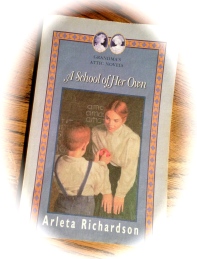Would you rather give the world more millionaires or more readers?
If you were education leader Mary McLeod Bethune, you would choose more readers. [1]
Mrs. Bethune (1875-1955) dedicated much of her life to doing just that. It was no job for wimps. Her school in Florida was funded by selling sweet potato pies. I don’t mean to idealize that situation, but I love that story because it illustrates the creativity, resourcefulness and work ethic of good entrepreneurs and the problem-solving projects found in an entrepreneur-friendly society.
While most teachers don’t have to bake pies to fund their schools these days, many do work long hours at low pay and high heart investment. Sure, they have Christmas break and summer holidays, but those breaks are not always as carefree as they may look from the outside.
Beyond that, teachers spend a great deal investing in tomorrow’s leaders. Doing this well requires a lot of wisdom and understanding, especially in our age. (Come to think of it, Mrs. Bethune might say it was different but just as hard in her day.)
With that in mind, here are three ideas to encourage and equip your teachers this year:
- Write a note of encouragement and thanks. At the beginning of the school year, even the best teachers may be facing insecurity as they step in front of a new group of students. Your vote of confidence and expression of gratitude could make a world of difference.
- Consider giving a little something as a “Back to School” gift or shopping in advance for Christmas. Sites like dayspring.com have many sweet ideas for teacher gifts. If you want something more unique, you could check out etsy.com. For example, teachers and apples seem to go together – at least in certain parts of the world! For a different spin on that tradition, you could get a trinket bowl made from apple tree wood to collect all the little odds and ends teachers need. Or how about a darling art print to remind your teacher of the gift that learning is?
- Don’t forget to pray for your teachers! Pray for joy in their work, engaging ideas, protection, stamina, good health, understanding administrators, and wisdom.
Ah, and you could always invite your teacher over for a slice of pie. Perhaps even sweet potato pie!
[1] Dave and Neta Jackson, Defeat of the Ghost Riders – Mary McLeod Bethune (Minneapolis: Bethany House, 1997), 141-142).



